Stan Lee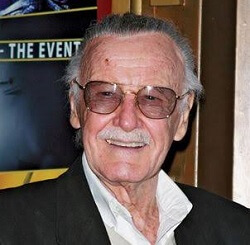
Stan Lee was an American comic book author, editor, publisher, and producer. He was born Stanley Martin on December 28, 1922, and he passed away on November 12, 2018. He advanced through the ranks of Timely Publications, a family-run company that would eventually become Marvel Comics. He served as the company's principal creative director for 20 years, overseeing its growth from a small publishing company division to a multi-media conglomerate that ruled the comics and cinema sectors. He co-created many well-known Marvel characters, including the superheroes Spider-Man, the X-Men, Iron Man, Thor, the Hulk, Ant-Man, the Wasp, the Fantastic Four, Black Panther, Daredevil, Doctor Strange, the Scarlet Witch, and Black Widow. In particular, he worked closely with co-writers/artists Jack Kirby and Steve Ditko. The debut of these and other superhero characters in the 1960s helped establish a more realistic style in superhero comics. In the 1970s, Lee contested the Comics Code Authority's limitations, which inadvertently resulted in adjustments to its regulations. He pursued the expansion of Marvel franchises in other media in the 1980s, although with varying degrees of success. After leaving Marvel in the 1990s, Lee continued to serve as the company's public face. He frequently made cameo appearances in movies and television shows based on Marvel characters, for which he received an executive producer credit, helping him to surpass Steve Jobs as the highest-grossing person in film history. Until his passing in 2018, he carried on with his autonomous artistic endeavours into his 90s. In 1994, Lee was inducted into the Will Eisner Award Hall of Fame for the comic book industry, and in 1995, he was admitted into the Jack Kirby Hall of Fame. In 2008, he was awarded the National Medal of Arts by the NEA. Marriage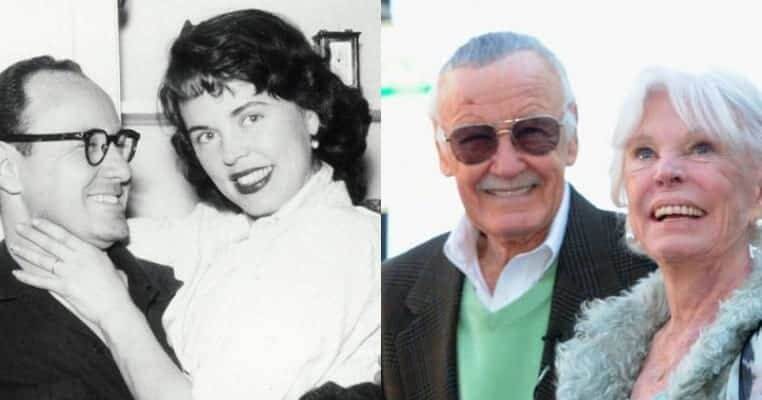
In Manhattan's East 90s from 1945 to 1947, Lee rented the top floor of a brownstone and resided there. On December 5, 1947, he wed Newcastle, England native Joan Clayton Boocock. In 1949, the pair purchased a home in Woodmere, New York, on Long Island, and they remained there until 1952. Joan Celia "J. C." Lee, their daughter, was born in 1950. Jan Lee, a different daughter, passed away shortly after being born in 1953. From 1952 to 1980, the Lee family called Hewlett Harbor on Long Island, New York, home. They also had a penthouse in Manhattan on East 63rd Street from 1975 to 1980, and they had a second property in Remsenburg, New York, in the 1970s. In order to relocate to the West Coast in 1981, they purchased a house in West Hollywood, California, that had formerly belonged to Don Wilson, radio announcer for comedian Jack Benny. ControversiesOn January 10, 2018, the Mail Online alleged that a small number accused Lee of nurses of sexually harassing them at his home in early 2017. Lee denied the allegations and claimed that the nurses were attempting to extort him. Upon the passing of his wife, Keya Morgan, Lee's business manager and a memorabilia collector, was accused of isolating Lee from his close friends and associates to gain access to Lee's wealth, which is thought to be worth US$50 million, according to a report that was published in April 2018 by The Hollywood Reporter. A restraining order was filed against Morgan in August 2018 requiring him to avoid Lee, his daughter, and his associates for a period of three years. In May 2019, the Los Angeles Superior Court filed five counts of abuse against Morgan for circumstances that took place in the middle of the previous year. False imprisonment, grand theft from an elderly person or dependent adult, fraud, forgery, and elder abuse were the charges. Jerardo Olivarez, who was introduced to Lee by J.C. following the loss of his wife, was another participant in the alleged abuse. He was Lee's previous business manager. Lee accused Olivarez of being one of many "unscrupulous businessmen, sycophants, and opportunists" who approached him at this time in an April 2018 lawsuit. Lee's complaint claims that Olivarez amended Lee's will, fired Lee's personal banker, convinced him to allow transfers of millions of dollars from his accounts, and used some of the money to buy a condominium after obtaining Lee's power of attorney. Career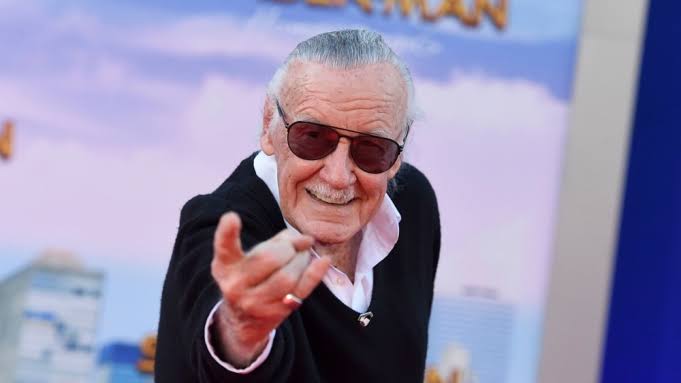
Lee became an assistant at pulp magazine and comic-book publisher Martin Goodman's new Timely Comics branch in 1939, thanks to the assistance of his uncle Robbie Solomon. By the 1960s, Timely had evolved into Marvel Comics. Timely editor Joe Simon formally hired Lee, whose relative Jean was Goodman's wife. Two issues later, Lee progressed from filler to actual comics with a backup feature, "'Headline' Hunter, Foreign Correspondent," written under the pen name "Reel Nats." In Mystic Comics #6, he co-created the Destroyer, his first superhero (August 1941). Other characters he co-created during the Golden Age of Comic Books include Jack Frost, who debuted in U.S.A. Comics #1 (August 1941), and Father Time, who debuted in Captain America Comics #6. (August 1941). Lee joined the US Army in early 1942 and served as a Signal Corps member, maintaining telegraph poles and other communications equipment. He was eventually assigned to the Training Film Division, where he worked on manuals, training films, slogans, and cartoons. He said his military classification was "playwright," and that only nine persons in the United States Army had that title. Many renowned or soon-to-be-famous people served in Lee's division in the Army, including three-time Academy Award-winning director Frank Capra, New Yorker cartoonist Charles Addams, and children's book writer and illustrator Theodor Geisel, subsequently known to the world as "Dr. Seuss." While in the Army, Lee received letters from Timely editors every week on Friday, stating what they required written and by when. Lee would write tales and then return them on Monday. One week, the mail clerk ignored his letter, stating that there was nothing in Lee's mailbox. The next day, Lee passed by the closed mailroom and noticed an envelope with Timely Comics' return address in his mailbox. Not wanting to miss a deadline, Lee requested that the mailroom be opened, but the officer in charge refused. So Lee took a screwdriver to the mailbox hinges and removed the envelope containing his assignment. The base captain, who disliked Lee, turned him up once the mailroom officer discovered what he had done. He may have been sent to Leavenworth Prison after being charged with tampering. Lee was spared punishment after the colonel in charge of the Finance Department intervened. Midway through the 1950s, when Atlas Comics had become a household name, Lee began penning tales in a variety of genres, including romance, Westerns, humour, science fiction, mediaeval adventures, horror, and suspense. Based on the radio comedy starring Marie Wilson, Lee collaborated with his comic book colleague Dan DeCarlo in the 1950s to create the syndicated newspaper strip My Friend Irma. By the end of the decade, Lee had become tired of his job and was thinking about leaving the industry. Marvel Comics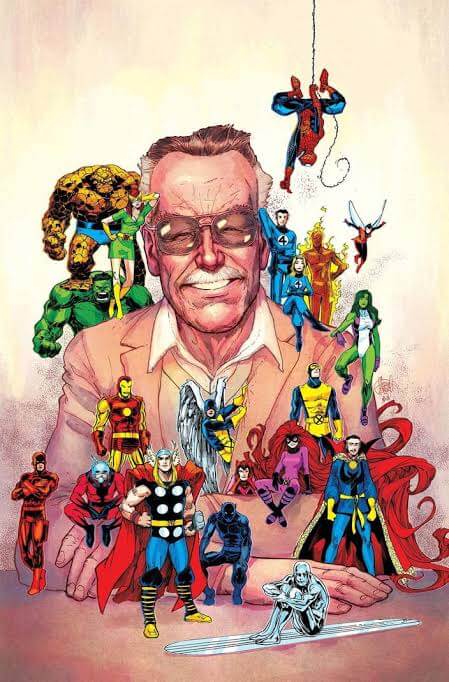
With an upgraded version of the Flash and later with the Justice League of America super-team, DC Comics editor Julius Schwartz successfully revitalised the superhero archetype in the late 1950s. Martin Goodman, the publisher, tasked Lee with creating a fresh group of superheroes in response. Lee's wife recommended that because he was preparing to change careers and had nothing to lose, he try stories he liked. Lee took the advice to heart and changed the idealised archetypes generally penned for preteens by giving his superheroes flaws and flawed humanity. Before this, the majority of superheroes were idealistically perfect individuals without any significant, long-lasting issues. Complex, realistic characters with nasty tempers, sad mood swings, and displays of vanity were introduced by Lee. These characters quarrelled with one another fretted about impressing their lovers and paying their debts, and occasionally even became ill from boredom. The Fantastic Four were the first superheroes Lee and illustrator Jack Kirby produced jointly. Due to the team's immediate success, Lee and Marvel's illustrators created a flood of new books. Again collaborating with Kirby, Lee co-created the Hulk, Thor, Iron Man, and X-Men; with Bill Everett, Daredevil; and with Steve Ditko, Doctor Strange; all of whom existed in a wholly shared universe with Spider-Man, Marvel's most famous character. The Avengers, a grouping of Lee and Kirby's newly developed characters, would bring back heroes from the 1940s like Captain America and the Sub-Mariner. Later, Kirby and Lee would argue about who should be given the credit for coming up with The Fantastic Four. Beyond the plots and characters, Lee revolutionised the way comic books drew in readers and fostered a feeling of community among readers and producers. He established the custom of routinely listing the writers, pencillers, inkers, and letterers in a credit panel on the splash page of each story. The Bullpen Bulletins page, which was written in the same conversational tone as the letter columns that appeared in each book, regularly featured news about Marvel staff members and planned stories. During a time when letters to other comic book publishers were often addressed "Dear Editor," Lee noted that his goal was for fans to think of comic book creators as friends, and he considered it a sign of his success on this front that letters to Marvel addressed the creators by the first name (e.g., "Dear Stan and Jack"). In 1965, Lee taped messages for the newly established Merry Marvel Marching Society fan organisation. Will Success Spoil Spiderman? was the subject of a March 3 WBAI radio programme with Lee and Kirby as guests. By 1967, the brand had become sufficiently entrenched in popular culture. Lee also favoured the use of comic books as a kind of social commentary on contemporary issues, particularly those involving racism and hate. Along with promoting a forthcoming comic book, "Stan's Soapbox" also discussed prejudice, intolerance, and discrimination. Lee ceased penning monthly comic books in 1972 to take on the position of publisher. His final appearances in The Amazing Spider-Man were in issue #110 (July 1972) and Fantastic Four #125. (August 1972). Lee rose to prominence and served as the company's public face. He spoke at colleges and took part in panel discussions while making appearances at comic book conventions all over the country. On January 3, 1977, Lee and John Romita Sr. began publishing the Spider-Man newspaper comic strip. The Silver Surfer: The Ultimate Cosmic Experience, which was written by Stan Lee and Jack Kirby and appeared in the Marvel Fireside Books series in 1978, is regarded as the company's first graphic novel. The Savage She-Hulk was initially presented in the February 1980 issue by Lee and John Buscema, who also wrote a Silver Surfer story for Epic Illustrated #1. (Spring 1980). Death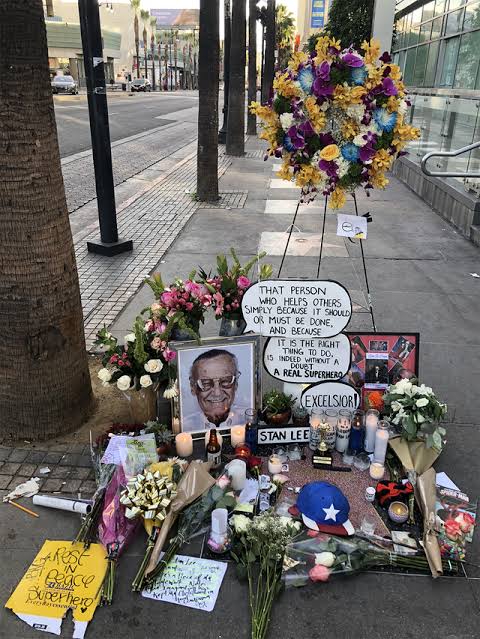
Lee had a pacemaker implanted in September 2012, necessitating the cancellation of convention appearances. By 2017, Lee had formally ceased making appearances at conventions. His 69-year-old wife Joan Boocock passed away on July 6, 2017, as a result of complications following a stroke. Lee died on November 12, 2018, only one month before his 96th birthday, at Cedars-Sinai Medical Center in Los Angeles, after being transported there for a medical emergency earlier in the day. In February of that year, Lee had already undergone hospitalisation for pneumonia. On his death certificate, cardiac arrest was reported as the direct cause of death. Respiratory failure and congestive heart failure were mentioned as the underlying causes. Additionally, it suggested that he had aspiration pneumonia. His daughter received his cremated remains after they had been handed to him. Two days before Lee passed away, Roy Thomas, the new editor-in-chief of Marvel, paid a visit to him to talk about the upcoming book The Stan Lee Story. Roy Thomas stated: "He was likely prepared to leave. However, he continued to discuss making more cameos. Stan was always willing to make further cameo appearances as long as he had the stamina to do so and was not required to travel. More than anything else, he enjoyed those."
Next TopicTaylor Swift
|
 For Videos Join Our Youtube Channel: Join Now
For Videos Join Our Youtube Channel: Join Now
Feedback
- Send your Feedback to [email protected]
Help Others, Please Share










